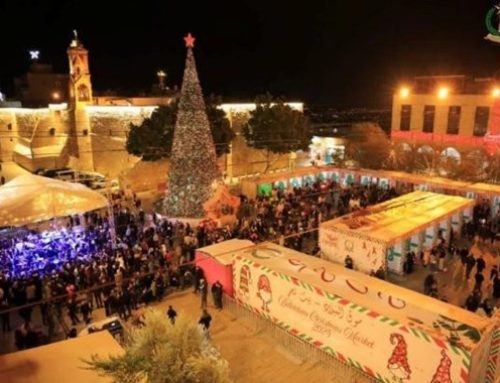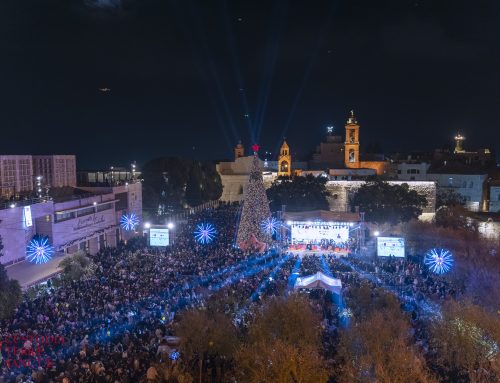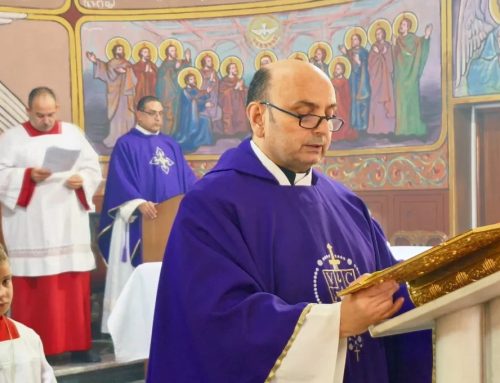.png)
“Palestine”: this denomination and its significance should be made clear. The Old Testament mentions “Philistia”, as Land of the “Philistines”. Westerners distinguish rightfully Philistines from Palestinians: a later but more extended identification. In the “Dictionary of the Bible and of Ancient East” (in Arabic) we read that Philistia was “the Bible Land, meaning the areas located to the west and east of Jordan River. Yet never in history were these two areas designated under the same denomination. In 1919 the British Mandate gave the name of “Palestine “to anything lying to the west of the Jordan River, making of the east of the river Emirate of Jordan (becoming later Kingdom)”. The British Mandate had as a matter of fact “imitated the Romans who, after having crushed the 2nd Jewish revolt (with Bar Kokhba in 135 A.D, gave the name of “Palestinian Syria” to an area west of Jordan River. This new area replaced Herod’s Judaea (cf. 1R9 :1,11). This Roman denomination, seemingly a bit fabricated (“Palestina”), originates probably from the Hebrew word “Philisht” or “Philishtim”, meaning “Land of the Philistins”. We may add that the Romans, and in particular Emperor Hadrian, who was of Spanish origin, in a bid to tease the Jews, referred to all the region as “Palestina”, thinking of “Philistins” who were the inhabitants of the five coastal cities: Gaza, Ashkelon, Ashdod, Ekron et Gath.
With regard to Greek historians – according to the Dictionary – like Herodote for example – they referred to “Palestina” as the narrow coastal strip which corresponds to the site of the five towns of the Philistins, “Pentapole of the Philistins”. On the other hand, other areas west of Jordan River, were called, in the Old Testament: the land of Canaan and Galaad.
To sum up, the Bible mentions Philistia and Philistins, known as “conquerors” by the Canaanites, for they had originated from Southern Greece, and in particular from the Island of Crete. In the 2nd century the name “Palestine” became the name of the whole land of Canaan, including the coastal strip. The Palestinian people left Canaanite language and shifted to Aramaic and then to Arabic, as of the years 30 of the VIIIth century A.D.
No to Aramaic denomination in Galilaea, for all Palestinians (and not Philistins) spoke Aramaic and Christian Aramaic, meaning Syriac
It is therefore not possible that certain groups – namely Maronites of Galilaea – decide to call themselves Aramaics, as if they were the only ones to talk Aramaic in the past. We have all, as Palestinians, spoken Aramaic before Arabic, like the inhabitants of Iraq, Syria, Lebanon and certain parts of Jordan and Iran. Up till this day the village of “Maaloua” in Syria speaks Aramaic, and it seems that three other villages follow its example. However, inhabitants of Maaloula – Christians and Moslems – consider themselves as Syrians.
As to Christian Aramaic language, called also “Syriac”, it is a liturgical language, and it is not possible for Maronites in Galilaea – namely the village of Jeshe – to use this language excluding others non Maronites, whether Christians or Moslems. Maronite rite is Syriac of Antioch. This new identification (Aramaeans) of those who serve in the Israeli army does not involve other Maronites who belong to the South Lebanese Army or to their siblings. Ironically or rather sadly, a certain number of Southern Lebanese, who fled into Israel, speak Hebrew, their Arabic language going in decline. As to the Syrian language, it remained a liturgical, dead language.
Syriac in the West Bank
In order to cast away any illusion with Jeshe Maronites, who think they are the only Syriac Aramaeans, let us take the example of the communities who are with us in Jerusalem and in Bethlehem who worship in, and speak, Syriac or Christian Aramaic at home ! However, they do not want to serve in the Israeli army, nor to be distinguished of other Palestinians, for all had spoken Aramaic language for centuries, between the VIth century BC and VIIth century AD, when Arabic started to be their language.
However, the Christian Aramaic language did not disappear from one day to another. Arabs had respected values of peoples and of previous cultures. That is why, in Abboud, a village in Ramallah district, at the Greek Orthodox Church of the Virgin Mary, are bits of a Gospel book, in Christian Aramaic language or Syriac. It is very likely that the text goes back to the XIth century A.D., more precisely to year 1058.
St Sophronius, Patriarch of Jerusalem, was Aramaean, SYriac but not Greek or Byzantine
In addition to illusions of Jeshe Maronites, there lies another error when they pretend that St Sophronius, Patriarch of the Holy City, died in 638 A.D., was Greek orthodox (in the modern sense) and Byzantine, though he was born in Damascus of Syrian parents. St Sophronius worshipped in Syriac rite and not Byzantine (which reached the Patriarchate of Jerusalem after year 1516, at the time of the Ottoman Turks. As to the prayer language, he used to worship in Greek in cities, and in Syriac in villages. St Sophronius was not “Orthodox” in the present sense of break-up with the Roman Pontiff, for the Schism between Rome and Constantinople took place five centuries after his death, meaning in 1054.
Intelligence, wisdom, charity…. and national unity !
Our wish is that all Christians of the East, especially those in the Arab countries, listen to their Patriarchs and Bishops with wisdom, understanding, caution and desire of unity. They should realize that the aim of recognizing an Aramaic identity for certain Christians consists in divide and rule. On our part, we are waiting for the end of civil wars which hindered progress in our countries, leaving behind thousands of dead and hundreds of thousands of injured, mutilated, as well as demolished houses and refugees without shelter
By: Fr. Peter H. Madros – LPJ





